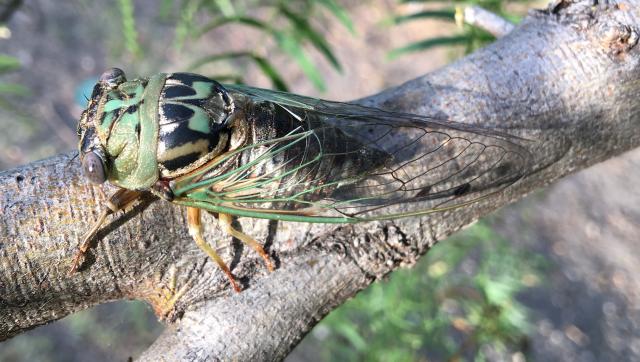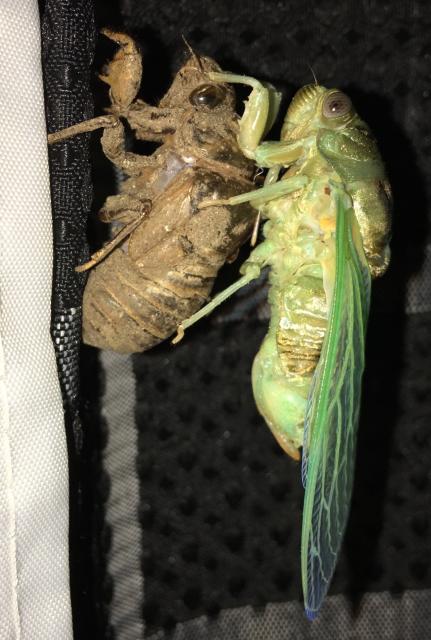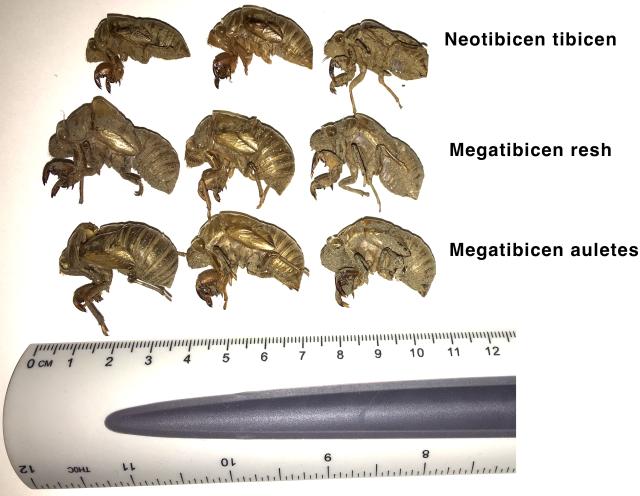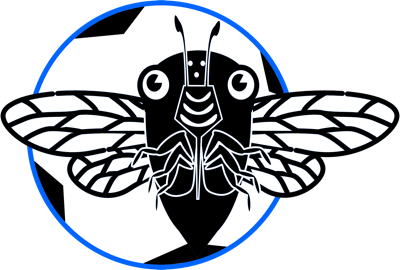Megatibicen resh (formerly Neotibicen resh and Tibicen resh) is commonly known as the Resh Cicada because the markings on its back resemble the Hebrew symbol Resh “ר”. The Resh Cicada has been documented to be found in Arkansas, Kansas, Lousiana, Mississippi, Nebraska, Oklahoma, South Carolina, Tennesee, and Texas.
Most people will discover them by finding their exuvia (shed skins, “shells”) on trees, or by their striking calls at sunset. I first encountered this cicada in Dallas, Texas near Pioneer Plaza (cattle sculptures). First I found the exuvia on oak trees (I needed a 3′ stick added to my 8′ reach to knock them down), and then at sunset I heard their call (which I mistook for M. auletes (which is not in Texas)). Listen to their song.
It is one of the smaller Megatibicen — maybe only M. dealbatus is smaller. Compare sizes using this image by Kathy Hill. Its compound eyes are gray-beige, with a black “mask” between the eyes, and its simple eyes are pink. Its ventral side is white and caramel colored. Its dorsal side is dominated by a light green color, with black, brown and white — forming a symmetrical camouflage pattern — which helps to hide the cicada in its arboreal habitat. Recently molted, golden pruinose shimmers on its head, pronotum, mesonotum, and abdomen.
During the molting process, up until the cicada’s body sclerotizes (hardens), the cicada’s body is leaf-green (camouflaged like a hanging leaf).
The exuvia of the Resh cicada is large and easy to spot, even high up in trees. Even though molted adults are closer in size to N. tibicen than M. auletes, the exuvia of M. resh is comparable to M. auletes, which is the largest cicada in North America.
More photos from this series: Megatibicen resh gallery.







